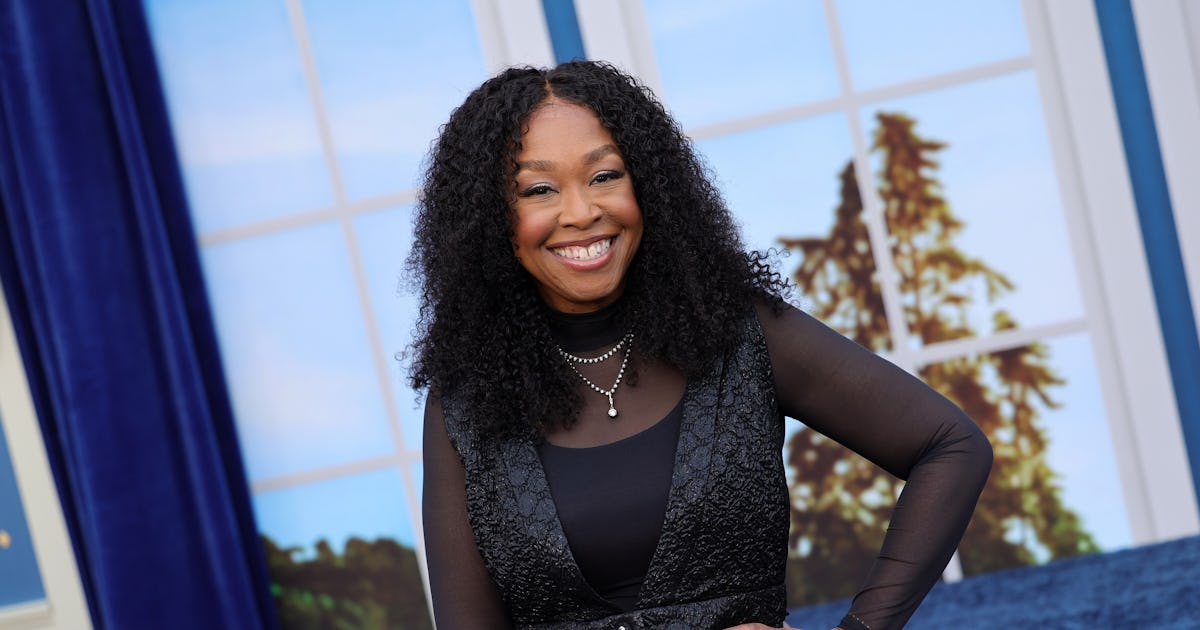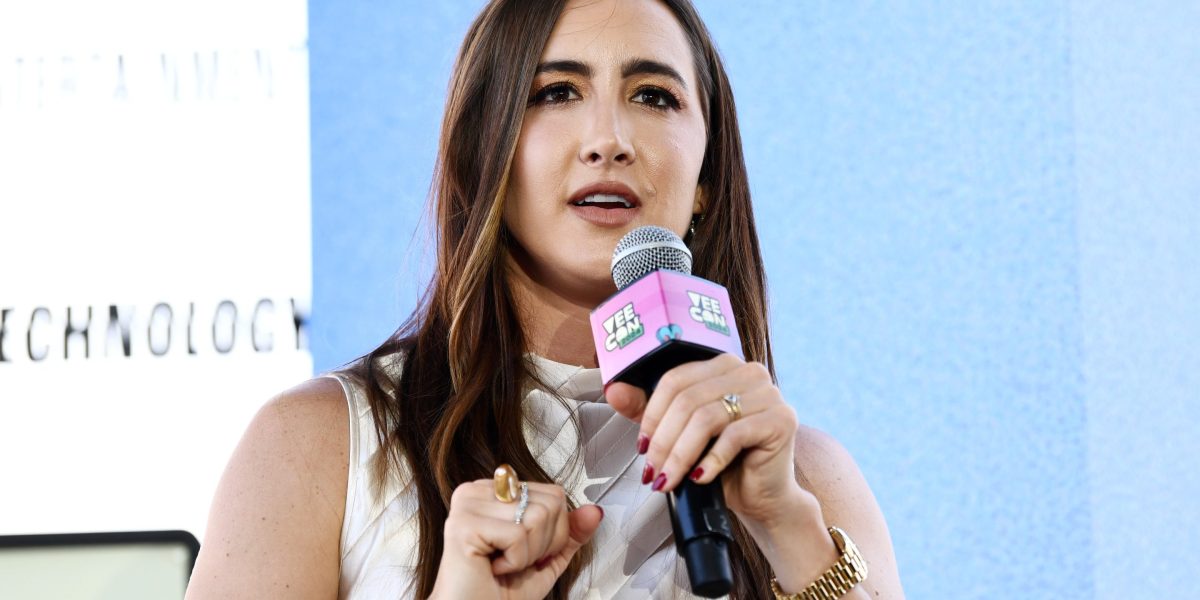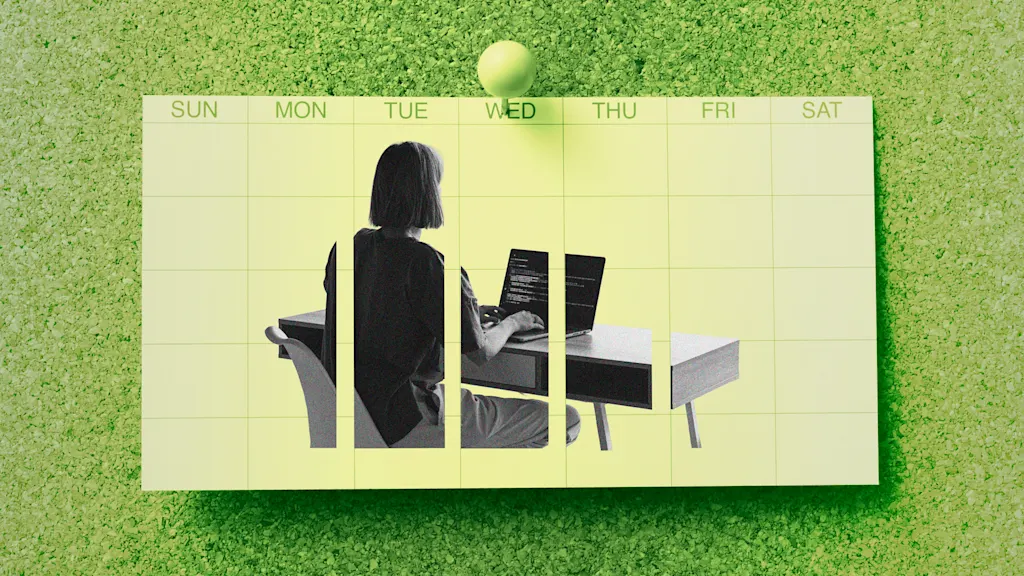#work-life-balance
#work-life-balance
[ follow ]
#remote-work #parenting #productivity #burnout #hybrid-work #motherhood #entrepreneurship #working-parents
fromDigiday
3 days agoWhy men and women view their tech careers so differently
HR leaders know that perception shapes reality in the workplace. But what happens when half your workforce experiences the organization fundamentally counter to the other half? Fresh research from the cybersecurity tech firm Acronis reveals a troubling perception gap that should concern every HR professional in the tech sector and beyond. According to Acronis' "2025 Women in Tech Report," which features results of a survey of more than 650 IT professionals in eight countries, men and women are working in the same industry.
Women
Business
fromFortune
19 hours agoBarry's 'cofounder' unwinds at his own gym-but even he admits balance is elusive: 'Many days I have to wake up and choose who I'm going to disappoint' | Fortune
Joey Gonzalez scaled Barry's from 2 to 94 studios across 16 countries, rising from instructor to executive chairman while keeping workouts and uneven work-life balance.
fromwww.theguardian.com
6 days agoGirl boss or tradwife? An economist on how a workforce built for men has failed women
She was embarking on a journey to do it all: a working mom, supporting her family with a career she loved. As track repairs tripled her commute time, things suddenly felt like they were falling apart. Instead of getting home in time to put her baby son to bed, Low found herself sobbing while breast pumping in an Amtrak bathroom.
Women
Productivity
fromFortune
1 week agoBillionaire ex-Google CEO says one deceptively simple weekend habit will help you level up at work | Fortune
Weekend undisturbed pen-and-paper reflection with no screens improves accountability, clarifies unfinished tasks, and enables effective planning while reducing necessary weekly work hours.
Philosophy
fromFortune
1 week agoStanford athlete turned wealth guru had everything he wanted by 30, but was miserable: 'I had the high-paying job, the title, the house, the car' | Fortune
True wealth includes financial, time, social, mental, and physical dimensions; prioritizing money alone leads to emptiness and an unfulfilled life.
Venture
fromBusiness Insider
1 week agoI work for Melinda French Gates at Pivotal Ventures. Here's a day in my life and the greatest lessons she's taught me.
Erin Harkless Moore leads investments at Pivotal Ventures, directing capital and resources to women while balancing family, exercise, and relationship-focused leadership.
fromFast Company
1 week agoMelinda Gates has 2 words for people who don't get enough sleep. Science agrees.
For example, she launched her own venture, with $12.5 billion to put toward advancing causes she cares about, specifically those related to women and families. She has even gotten involved in politics, endorsing a candidate for the first time ever. French Gates isn't new to leading an organization, or to leading people. She has spent the past few decades leaving her imprint on what is arguably the most influential charitable organization in the world.
Wellness
fromBusiness Insider
1 week agoI'm a dad who works in-office 3 days a week. If it became 5 days, I'd ask for a raise - time away from my family doesn't come for free.
Ever since my daughter was born in 2020, I've worked remotely and set my own business hours at various companies as an SEO and content specialist. Even with the flexibility of setting my own schedule, it was always a balancing act - trying to prioritize quality time with my family while still advancing my career and staying engaged professionally. Now I work at Call Tracking Metrics, which has a three-day-a-week in-office schedule.
Parenting
fromFortune
1 week agoIt's not 40 hours-Gen Zers don't know how long they need to work in a week and even experts can't decide | Fortune
Workplace experts can't decide what's the optimal number of working hours for Gen Z workers-but they know it's not "every waking minute" of the day like Cerebras' CEO suggested, or the 60 hour "sweet spot" Google's Sergey Brin recommended earlier this year. That schedule is unsustainable, but 40-hour workweeks aren't enough for the young and hungry. The CEO of $8.1 billion AI chips company Cerebras recently hit back at the idea entrepreneurs can launch an innovative business working "30, 40, 50 hours a week."
Careers
fromClickUp
1 week agoFree Out-of-Office Plan Templates for a Smooth Workflow
Taking time off should mean genuinely disconnecting. But without a clear plan in place, the stress of leaving work behind can feel overwhelming. That's where an out-of-office plan template comes in. It helps you set clear expectations, delegate responsibilities, and ensure a seamless workflow, allowing you to unplug and recharge fully. This guide will explore the best out-of-office plan templates to help you enjoy a stress-free break without work creeping into your downtime.
Productivity
Business
fromFortune
1 week agoMeghan, Duchess of Sussex, on work-life balance as a CEO: 'I'm still going to chaperone the first-grade field trip' | Fortune
Meghan Markle balances roles as entrepreneur, CEO of As Ever, mother, and charity leader while remaining hands-on in brand operations and family life.
Mindfulness
fromBusiness Insider
2 weeks agoThe best advice I ever got about work-life balance came from a past boyfriend's mom. It's shaped my life for 2 decades.
Work should finance life; prioritize personal time, rest, and meaningful activities instead of sacrificing well-being for relentless career pursuit.
fromBusiness Insider
2 weeks agoWall Street's rising stars share how they set boundaries and avoid burnout - even in one of the toughest industries
Pressure is among the few certainties of daily life on Wall Street - and knowing how to manage it is key to success. Business Insider asked its 2025 Rising Stars of Wall Street how they set boundaries and maintain routines to stay grounded in an industry where the threat of burnout lurks behind each promotion. All of them are standing out at some of the country's top financial firms at age 35 or younger, and somehow maintaining personal lives and sanity in the process.
Business
fromBustle
2 weeks agoExclusive: Shonda Rhimes Reveals Her Biggest Early Career Mistake
"Before, work was everything," Rhimes, 55, tells Bustle over Zoom. "I [now] feel like I'm much more of a three-dimensional, rounded person. I have a work life, I have a personal life, I have a social life. I get to spend all the time I want being a mom. It's about finding a life that's more in balance."
Television
fromFortune
2 weeks agoLike Bill Gates, this sports billionaire says a 3-day work week is on the horizon thanks to AI-but you won't be bored doing nothing at home | Fortune
"There's going to be more free time," he told the Financial Times, adding that the world can realistically cut the workweek to four, or even three days, in the coming years.
Business
fromHarvard Business Review
2 weeks agoTim Ferriss at a Career Crossroads: How Should He Shape His Next Chapter?
Tim Ferriss has been called the Oprah of Audio. His podcast, the Tim Ferriss Show, surpassed a billion downloads and reshaped the digital media landscape. Yet at the height of his success, Ferriss found himself at a crossroads. With podcasting becoming a crowded competitive space, he wondered whether the medium that had defined his career was still the best vehicle for his curiosity, creativity, and impact. How should a creator who has always thrived by reinventing himself decide what's next?
Venture
Wellness
fromLondon Business News | Londonlovesbusiness.com
2 weeks agoMore than half of Brits feel overworked in their jobs - London Business News | Londonlovesbusiness.com
Majority of British workers feel overworked, harming health, productivity, and work-life balance and increasing stress, sick leave, and chronic disease risk.
fromFortune
2 weeks agoCEO of $8 billion AI company says he's 'mind boggled' that people think you can work 38 hours a week, have work-life balance, and be successful | Fortune
"This notion that somehow you can achieve greatness, you can build something extraordinary by working 38 hours a week and having work life balance, that is mind-boggling to me," Andrew Feldman, cofounder and CEO of $8.1 billion AI chip company Cerebras, stressed recently on the 20VC podcast. "It's not true in any part of life." As many U.S. workers push for shorter workweeks, America's founders are still sticking with "grindset" culture as the formula for trillion-dollar success.
Startup companies
fromYahoo Finance
2 weeks agoWork from home benefits are disappearing in Aussie job ads - except for these industries
The number of job ads offering work-from-home perks is on the decline, but there are some industries still holding onto the pandemic-era arrangement. The labour market is tough for job seekers across much of the country and employers in some sectors have realised they don't have to offer the same level of flexibility to attract the best talent. New SEEK data has revealed only 9 per cent of ads now mention WFH, which is down slightly from a 2023 peak of 10 per cent per cent.
Remote teams
Social media marketing
fromBuffer: All-you-need social media toolkit for small businesses
3 weeks agoA WFH Mom's No-Burnout System for Staying Consistent on Social Media
A hybrid content assistant paired with automation enables consistent multi-platform posting, audience growth, employer connections, and balanced time for clients, family, and rest.
Careers
fromBusiness Insider
3 weeks agoI've worked in Big Four consulting and Big Tech. If I could restart my career, I know which I'd pick.
Starting a career in tech enables faster-paced work, clearer technical skill development, and direct ownership of building and deploying projects compared with consulting.
fromwww.housingwire.com
3 weeks agoHow Jeff Mateja Listed 90 Houses in 90 Days (Working 9-5)
Jeff Mateja doesn't think so. A former corporate auditor at IBM and current top listing agent at Keller Williams, Mateja works old-school banker's hours: Monday to Friday, 9:00 to 5:00. He goes to the beach on Sundays with everyone else. He doesn't mind the crowds. He also lists more houses than some large teams. His latest claim to fame: Listing 90 homes in 90 days. Well, technically 72 days. He only works five days a week.
Real estate
Germany news
fromBusiness Insider
3 weeks agoI'm an American who's worked in Germany for years. The corporate culture and job security feel much better here.
Corporate jobs in Germany provide stronger job security and legal employee protections while emphasizing work-life balance and mandatory vacation usage.
Soccer (FIFA)
fromIndependent
3 weeks ago'Playing sport at the highest level is a choice, not a sacrifice' - Kildare's Kevin Feely
Kevin Feely balances inter-county football, family life, and a physiotherapy business since 2017, sacrificing significant potential earnings without calculating the exact loss.
fromIndependent
3 weeks ago'My 20s are gone and my bank account is no better off' - teacher burnout and stress driving exodus from classrooms in Ireland
Bad pay and bigger asks from parents are other factors driving young educators from our schools for careers with better work-life balance - at a time when over 1,800 teaching posts remain unfilled
Education
Relationships
fromIndependent
4 weeks agoAsking for a friend: I used to see my partner a lot more before he started doing shift work. Is it a good idea to move in together so we can spend more time together again?
Rebuild personal independence by investing in hobbies, friends, family and alone time rather than making a partner your entire world.
Higher education
fromBusiness Insider
1 month agoI was lucky enough to land a full-time job before graduating from college. But I wasn't prepared for the real world.
Graduating and starting a full-time job created emotional loss, reduced social freedom, and difficulty adjusting from college routines to adult responsibilities.
Parenting
fromBusiness Insider
1 month agoI work full-time while caring for both my mom and kids. It can be overwhelming, but it's taught me I don't have to be in control.
Balancing parenting and caregiving for an aging parent requires constant attention, adaptive routines, and can increase positivity and self-confidence.
fromFortune
1 month agoThis millennial nurse commutes 5,000 miles from Sweden to work at a California hospital. She works eight days in a row and rakes in over $100 an hour | Fortune
Courtney El Refai may call Sweden home, but every six weeks the 32-year-old commutes some 5,300 miles away to work at a San Francisco hospital as a neonatal intensive care unit (NICU) nurse. While some may call it crazy, El Refai said it's all worth it for her dream job. Making over $100 an hour on a per diem schedule, she only has to work four, eight-hour shifts every four weeks.
Travel
fromDesign Milk
1 month agoAaron Leshtz on Dodger Stadium, Topo Designs, Eric Nash + More
After Los Angeles native Aaron Leshtz earned his degree in architecture from the University of Southern California, he accepted a position at Studio Sofield in New York City. It was more than a job, but a pivotal period that left a lasting impression. "Stylistically it was very different from what I had done before or even studied in school," says Leshtz. "The work was varied, thoughtful, and always emphasized craft and materiality over anything else."
Design
fromBusiness Insider
1 month agoI quit investment banking to work in Big Tech. My work life balance is better but it's harder to make friends.
This as-told-to essay is based on a conversation with Dana Schoolsky, a 24-year-old working in monetization strategy and operations at TikTok in New York City. It's been edited for length and clarity. When I worked in investment banking as an analyst, everything felt urgent, as if a fire alarm was going off at all times. I felt on edge even after leaving the office, never knowing when I might be called to action to do more work, which took a toll on me.
Tech industry
fromThe Atlantic
1 month agoIf I Work Harder, Will You Love Me?
Between teaching MBA students and speaking to a lot of business audiences, I'm often interacting with successful people who work extremely long hours. It's common for me to hear about 13-hour workdays and seven-day workweeks, with few or no vacations. What I see among many of those I encounter is workaholism, a pathology characterized by continuing to work during discretionary time, thinking about work all the time, and pursuing job tasks well beyond what's required to meet any need.
Mental health
fromFortune
1 month agoHarry Potter star Emma Watson paused her career at 29, after 16-hour days turned her into 'an insane person' who couldn't hold a conversation | Fortune
"I just used to completely sacrifice myself for whatever the thing was I was trying to achieve," Watson said on an Episode of "On Purpose" by Jay Shetty yesterday. "Making films, the hours on them are so demanding, that to have your own life alongside that, to have that balance is almost impossible," the star with an estimated $85 million net worth added.
Mental health
fromFast Company
1 month agoMore non-execs are hiring assistants. Should you get one?
For repetitive tasks or errands, it makes sense for some people to hire a helping hand for the price of $50 or $60 an hour-or even cheaper if you enlist the services of AI. And while there's only so much someone who isn't employed by your company can do for you when it comes to work matters, there's still plenty they can do otherwise that could help your work-life balance.
Artificial intelligence
fromFast Company
1 month agoWork doesn't have to suck: A new vision for leadership
Millennials and Gen Z are poised to rise in the ranks, however much of the business canon and available literature offers advice from an irrelevant world-a world before hybrid offices, social media, and kiss cams at Coldplay concerts. Leaders are navigating digital and IRL (in real life) challenges where the older generations' leadership styles are incongruous with the current moment's needs.
Business
Startup companies
fromFortune
1 month agoDuolingo's CEO tells new hires his company is 'allergic' to toxic behavior-and not to 'work yourself to death' | Fortune
Prioritize kindness, take initiative to fix problems, and align priorities with company mission while maintaining work-life balance; toxic behavior is rejected.
fromwww.theguardian.com
1 month agoPut yourself first! 10 ways women can get a much better deal at work, home and beyond
In 2017, I gave birth to my son, and also a midlife crisis. Suddenly, my two-hour commute from our home in New York City to my job as an economist at the University of Pennsylvania went from inconvenient but sustainable to the bane of my existence. And my marriage, which had seemed flawed but in a cute, work-in-progress kind of way, suddenly seemed to be falling apart at the seams.
Women
[ Load more ]















